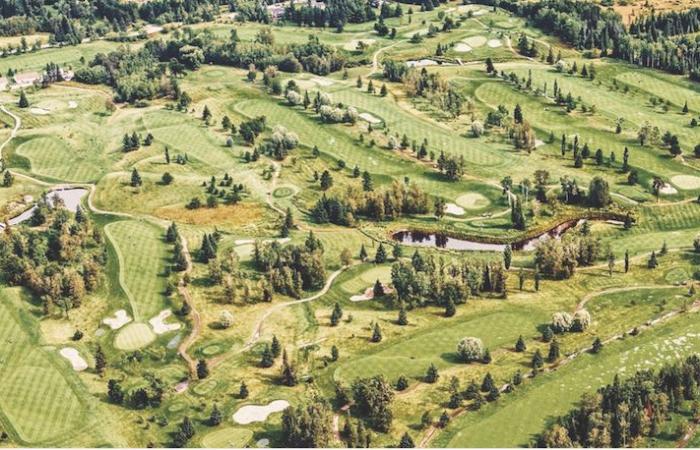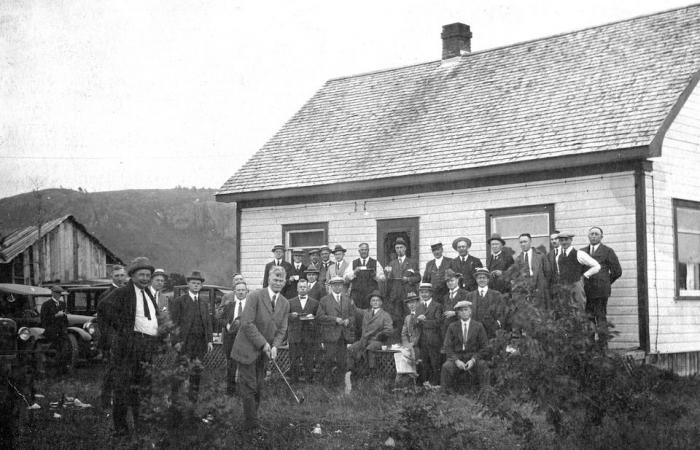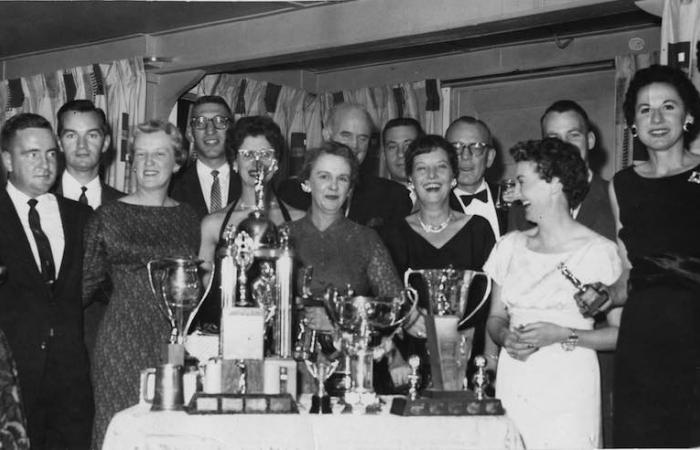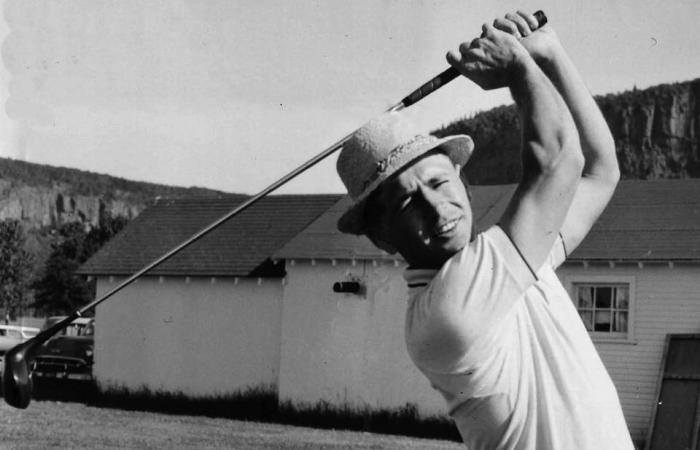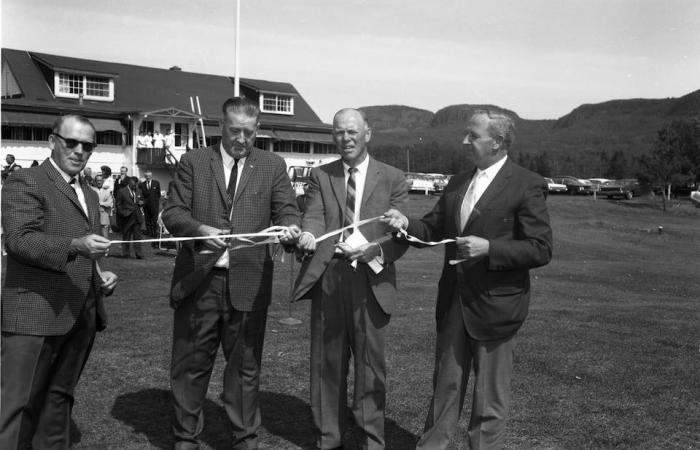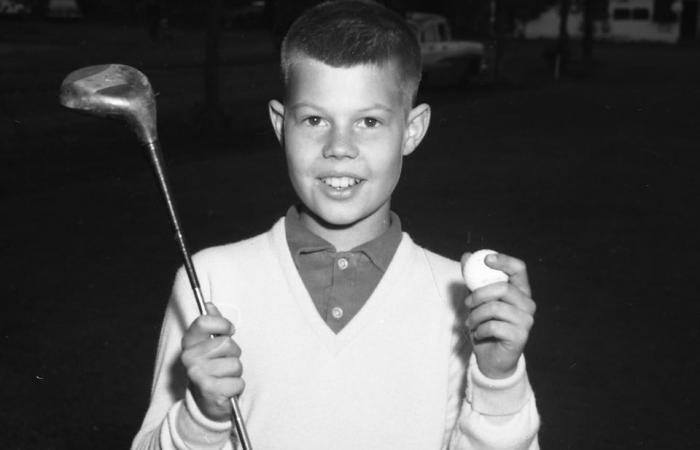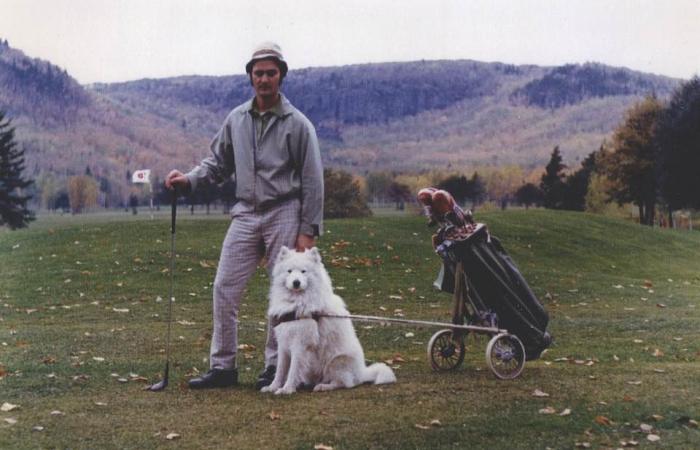It was one hundred years ago this summer that a headline in the August 21st, 1923 edition of the Daily Times-Journal announced that Fort William was to have its own Golf and Country Club.
It went on to report that thirty prominent citizens who had already signed up as provisional charter members were guests of Dr. Marshall B. Dean and Dr. Robert J. Manion at an outing and dinner held at the Garrity Farm, the proposed future home of the club. The evening ended with a ceremonial first drive set up in front of the farmhouse with Dr. Dean taking the first shot, from atop a tea cup, which was noted as being a beauty.
Another gathering was held at the Kam Club in early September of that year where plans were made to form a company by attracting 150 charter members with an initial offering of shares valued at $100 each, plus a nominal entrance fee of $1. It was reported at that meeting that the famous golf course architect Stanley Thompson had been shown prospective sites for a course and it was he who recommended the Garrity Farm due to its fertile soil and the number of ‘fells and ravines’ which would make it ideal for the average golfer. The attendees were further advised that the cost to purchase the farm was $7,500.
Receiving its official charter issued by the Province of Ontario on October 8th, 1923 in the name of Fort William Country Club Limited, George A. Coslett served as Chairman at the first annual meeting of shareholders. By 1925 a total of 191 shares of stock had been sold and under the guidance of Thompson work continued in earnest on the initial 9-hole course nestled beneath what is today referred to as the Nor’Wester mountain range. Plans included renovating the Garrity farmhouse to serve as the women’s clubhouse and constructing a 40’ x 22’ canvas covered building for the men, along with another structure to serve as the caddy house and pro shop. George Clark Jones, a graduate of the British golf school, was employed as the club’s first pro who told a local reporter that the course possessed unlimited possibilities and the best second shot holes it had been his privilege to see. Completed at a cost of $17,000, the members enjoyed their first round of golf in May of 1926. Robert (Bert) Jolly took over the head pro duties for 1928-29, followed by Charlie Nixon from 1930-31, with Jolly returning as club pro in the late 1930s.
Due to such world events as the Great Depression and Second World War, development of the club was slow during the 1930s and 40s, but they persevered. A report by President Alfred Sear at the 1932 Annual Meeting held at the Royal Edward Hotel noted a membership of 71 with a slight deficit in operations from the previous year. It was further reported that owing to strenuous times it was deemed advisable to dispense with the services of a professional and employ a grounds man and his wife to look after the course and clubhouse.
By the late 1940s and into the 1950s prosperity had returned to the Lakehead and to the club, which resulted in extraordinary growth. Improvements included an expansion to the old clubhouse, along with the addition of a basement, which saw the facility become a year-round operation, with over 400 members enjoying social events along with golf. The dining room gained an excellent reputation and became a favourite spot for the surrounding community. In 1956 Stan Baluik, who spent the winter months playing professional hockey, became the new club professional.
Planning for the redesign of the course to 18-holes began in 1959 with the hiring of golf architect Norman H. Woods and the purchase of 45 acres of land, with the total cost of the project estimated to be about $85,000. On the official opening of the new course, held on August 29th 1964, the first drive was taken by Norman Owens who was an original charter member, and ten-year old Richard Moody scored a hole-in-one on hole number 2. It turned out this was not the first ace scored on the new links, as Vi Corazza accomplished the same feat on hole number 5 earlier in the season. In 1966 a newly constructed clubhouse included a pro shop overseen by Jim Lawrie, and more space for the ever growing membership. The generous support of the Great Lakes Paper Company helped with the clubs’ expansion, along with a re-issuing of shares.
As the club continued to grow, it welcomed club pro Mike Roche in 1969, and became host to a number of highly popular tournaments including the Videon Open, an event which attracted Canada’s top professional players to the Lakehead, including the likes of Moe Norman. The club also became an important part of the non-golfing community, hosting various charitable events, weddings, holiday parties, and special meetings throughout the year.
Alf Shand began his twenty-five-year club pro career in 1982 and with his arrival came such improvements as rental motorized golf carts, a modern pro shop, a driving range, new bunkering, and the installation of bent grass greens. The club flourished during the 1980s and 90s with membership levels exceeding 550 with many others on waiting lists. At the same time, both the Men’s and Ladies’ Invitational tournaments became two of the most popular events in the Thunder Bay District.
The turn of the century saw the official acquisition of land for a driving range and the return of professional golf to the Thunder Bay area with the hosting of the Canadian Tour’s 2001 Ontario Open Heritage Classic. Jim Szturm took over the reigns as club pro for a decade, with Craig Morton currently holding that position. The 2000s also ushered in a new era of competition with the opening of Whitewater Golf Course in 2005. As it had done earlier on in its history, the club survived the challenge, and also successfully navigated the COVID-19 pandemic which actually led to a resurgence in membership and overall rebirth for the club.
To say that the members of the Fort William Golf & Country Club are proud of their past would be an understatement. In celebration of this important milestone they have planned a number of activities to mark their centennial year. It kicked off with a 1920s themed gala followed by a walk through time Open House, complete with the unveiling of new heritage panels that adorn their clubhouse walls. One only needs to spend a day on their breathtaking links to feel grateful for the visionaries from a century ago who set the wheels in motion, and to all of the people over the past 100 years who have kept their dream alive. Happy 100th Anniversary!

